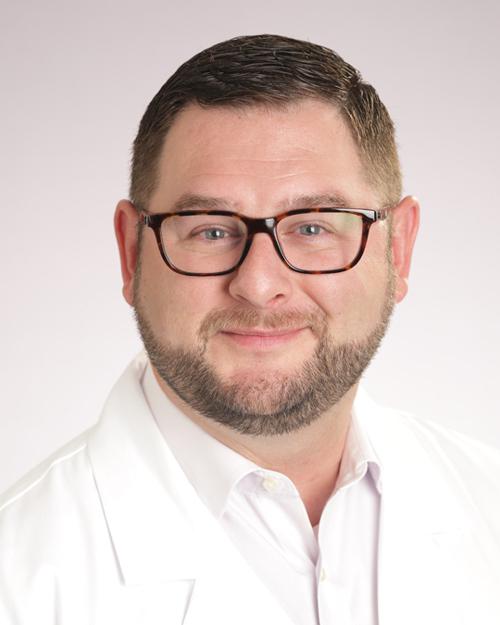
Luke Coward, a Southern Indiana firefighter born with Ebstein anomaly of the tricuspid valve, never felt limited by the condition. From the time he was diagnosed at 18 months old, he maintained an active childhood and adolescence. Then, as he grew into adulthood, he began presenting symptoms.
At age 20, Luke began having intermittent heart symptoms that recurred for several years. He began experiencing episodes of supraventricular tachycardia (SVT). As a firefighter, Luke was used to pushing himself physically –– but these episodes would happen even during mild physical activity. He went to emergency departments on two occasions and had been given IV adenosine. He was put on a beta blocker, and he thought that would be the end of the spells. However, he had another breakthrough SVT episode and was told he should see adult congenital heart disease (ACHD) specialists.
Luke was referred to physicians with Norton Children’s Heart Institute, affiliated with the University of Louisville. A multidisciplinary team of physicians, including Bahaaldin Alsoufi, M.D., chief of pediatric cardiovascular surgery, and Chris L. Johnsrude, M.D., director of the pediatric and adult congenital arrhythmia service at Norton Children’s Hospital, strategized about how best to treat Luke.
The team decided that surgery would be needed to fix the structural issue. But before that, Luke would need an electrophysiology (EP) study and catheter ablation, scheduled on Valentine’s Day 2019, to address the SVT issues he was having. During the 10-hour procedure, Dr. Johnsrude created a virtual 3D model of Luke’s heart, which showed that his heart anatomy was very complex, and also that he had multiple types of SVT. Dr. Johnsrude then went through each location causing SVT in Luke’s heart, and using specialized catheters, used radiofrequency ablation or cryoablation to address the abnormal rhythms. After the procedure, however, Luke had another SVT episode, which was likely to the structural heart issues and the many locations where the abnormal rhythm originated.
“Because we knew he had more SVT after the ablation, Dr. Alsoufi and I spent a lot of time reviewing his anatomy and our findings, and planned out how a surgeon could address the remaining rhythm issues at the time of surgery,” Dr. Johnsrude said.
Cone Procedure to Address Ebstein Anomaly Heart Structure
The team decided that the cone procedure would be the best surgical repair option to address Luke’s abnormal tricuspid valve, and that additional surgical ablation of remaining lesions as determined by the EP study would help eliminate any additional source of cardiac arrhythmia. The cone procedure was developed in the 1990s, and has gradually gained popularity, especially in the past decade, to become the surgical repair technique of choice.
“In this complex surgery, the tissue from the patient’s own tricuspid valve is extensively freed from its abnormal attachments to the right ventricle wall and mobilized to allow the creation of a cone-shaped valve that best simulates normal tricuspid valve function,” Dr. Alsoufi said. “This procedure has shown to be associated with the best quality of life and freedom from symptoms or reintervention, and is also especially important in children in whom we anticipate the growth of the valve, since we are using the patient’s own tissue.”
Luke had the cone procedure on March 7, 2019. Luke was back on a fire truck on June 16, 2019.
“During that time, I was doing my cardiac rehab, walking and exercising, and doing all recommended exercises. There were other firemen out longer for shoulder surgery,” Luke said. “I was impressed by how quickly I healed.
“After surgery and everything the doctors recommended, I feel 100% about my health and abilities. It’s so nice to have the heart team behind me. I feel so much better than I ever did before. I didn’t know I could feel this good.”
Patient’s ‘Trust With Norton Children’s’ Rewarded
“We spent a lot of time thinking about where we were going to go — I’m glad we placed our trust with Norton Children’s,” Luke said. “After everything I went through, I would completely and wholeheartedly recommended Norton Children’s heart program. It is top of the line; I would recommend Dr. Alsoufi and Dr. Johnsrude to anyone. I would have no doubts about the care they would receive.”
Refer a Patient
Use our online form to refer a patient to Norton Children’s Heart Institute, affiliated with the University of Louisville.

